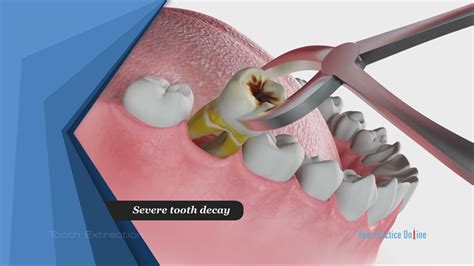The Best Way to Remove a Broken Tooth: A Comprehensive Guide
A broken tooth is a painful and unsettling experience, demanding immediate attention. How you handle the situation can significantly impact your oral health and the eventual restoration process. This guide provides a comprehensive overview of how to best manage a broken tooth, from immediate first aid to seeking professional dental care.
What to Do Immediately After a Tooth Breaks
The first few minutes after a tooth breaks are crucial. Your immediate actions can help prevent further damage and infection.
1. Stay Calm: Panic won't help. Assess the situation calmly and follow the steps below.
2. Control Bleeding: Apply gentle pressure to the area with a clean gauze pad or cloth for 10-15 minutes. Biting down on a clean tea bag can also help because of the tannins' clotting properties.
3. Find the Broken Pieces: If possible, carefully locate and collect any fragments of the broken tooth. Rinse them gently with saline solution (a mixture of salt and water) and store them in a container of milk or saline. This is vital if your dentist attempts reattachment.
4. Rinse Your Mouth: Gently rinse your mouth with warm saltwater to remove any debris and help prevent infection. Avoid vigorous rinsing which could dislodge a blood clot.
5. Apply Cold Compress: Apply a cold compress to the outside of your cheek near the affected area to reduce swelling.
What NOT to Do After a Tooth Breaks
Several actions can worsen the situation. Avoid these:
- Touching the broken area excessively: This can increase the risk of infection.
- Using harsh mouthwashes: These can irritate the injured area.
- Ignoring the injury: Seek professional dental care as soon as possible.
- Trying to fix it yourself: This could cause further damage and potentially introduce infection.
How to Choose the Right Dental Professional
Selecting the appropriate dental professional is key. Depending on the severity of the break, you may need a general dentist, an endodontist (root canal specialist), or an oral surgeon.
- General Dentist: For minor breaks, a general dentist is often sufficient. They can assess the damage, provide pain relief, and possibly perform a simple restoration.
- Endodontist: If the break involves the pulp (the inner part of the tooth containing nerves and blood vessels), an endodontist is needed to perform a root canal.
- Oral Surgeon: For significant breaks or if extraction is necessary, an oral surgeon is the appropriate specialist.
What are the Treatment Options for a Broken Tooth?
Treatment options vary greatly depending on the extent of the damage.
- Dental Bonding: For minor chips and cracks, your dentist might use composite resin to bond the broken pieces back together.
- Dental Crown: For larger breaks or significant structural damage, a crown (a cap) is placed over the remaining tooth structure to restore its shape and function.
- Root Canal Treatment: If the pulp is exposed or infected, a root canal is necessary to remove the infected tissue and save the tooth.
- Extraction: In severe cases where the tooth is beyond repair, extraction may be necessary.
How Much Does Treating a Broken Tooth Cost?
The cost of treating a broken tooth is highly variable and depends on several factors, including the extent of the damage, the necessary treatment, and your location. It's best to contact your dentist or insurance provider for a personalized cost estimate.
Can a Broken Tooth Heal on Its Own?
No, a broken tooth will not heal on its own. The broken area is susceptible to infection and further damage, requiring professional intervention to restore its structure and function.
What are the Long-Term Effects of Untreated Broken Teeth?
Leaving a broken tooth untreated can lead to:
- Severe Pain: Exposure of the pulp can cause intense pain.
- Infection: Bacteria can enter the exposed area, leading to infection, abscesses, and potentially spreading to other parts of the body.
- Tooth Loss: Severe damage may ultimately lead to tooth extraction.
- Damage to Adjacent Teeth: The break could affect the stability of nearby teeth.
When Should I See a Dentist After a Broken Tooth?
You should see a dentist as soon as possible after a tooth breaks. The sooner you receive treatment, the better the chances of preserving the tooth and minimizing complications.
This guide provides a general overview; always consult with a dental professional for diagnosis and treatment. Prompt and appropriate treatment is crucial to protect your oral health.

